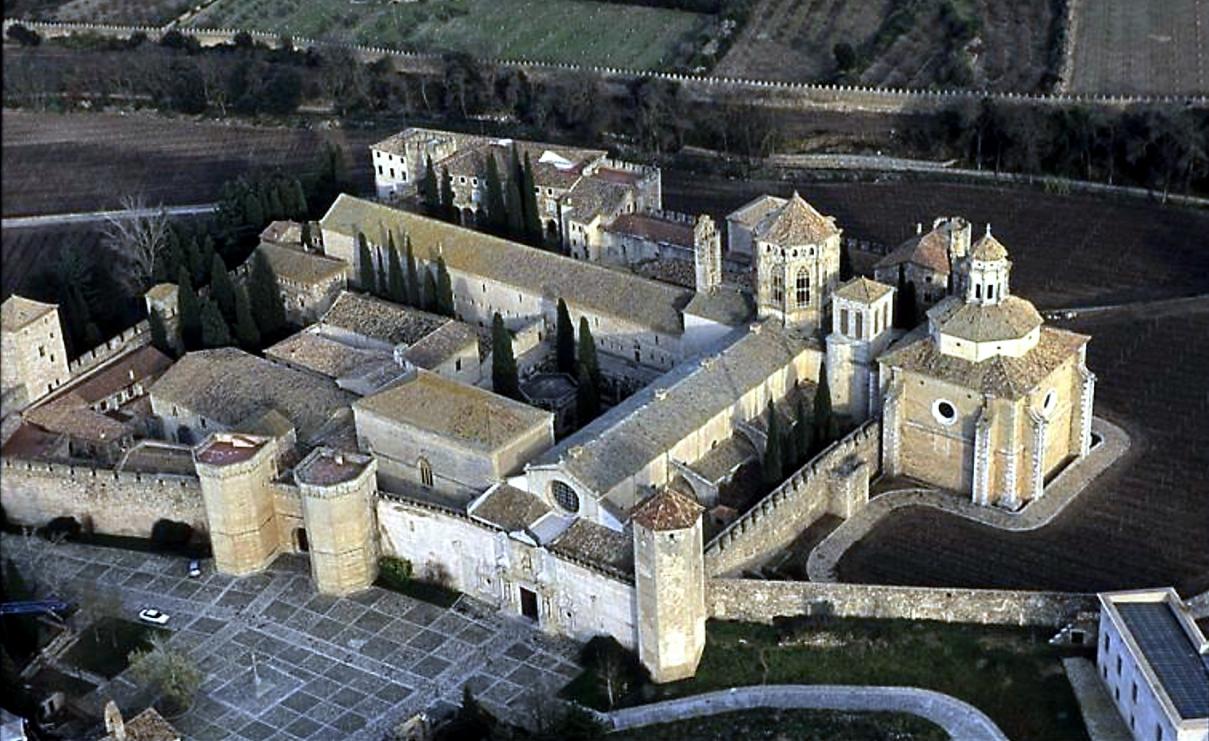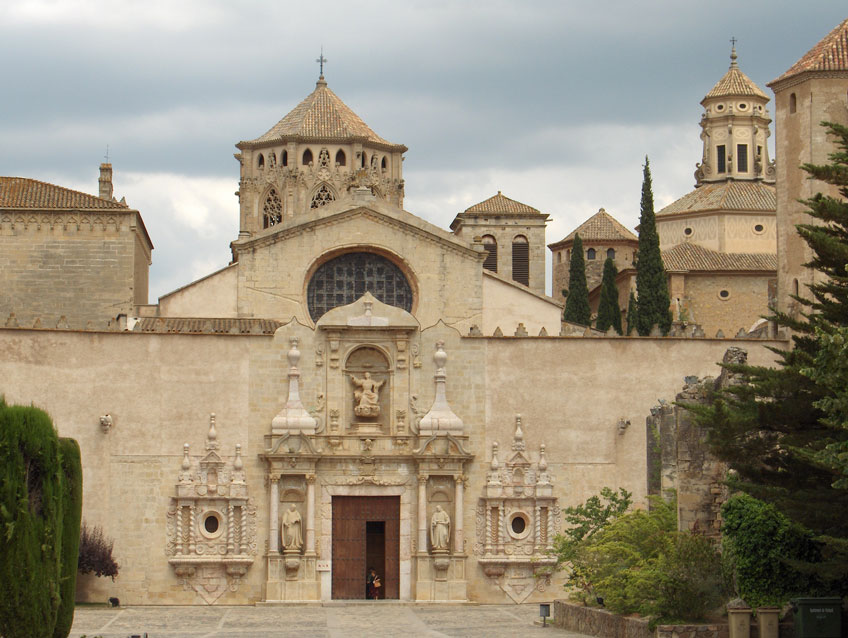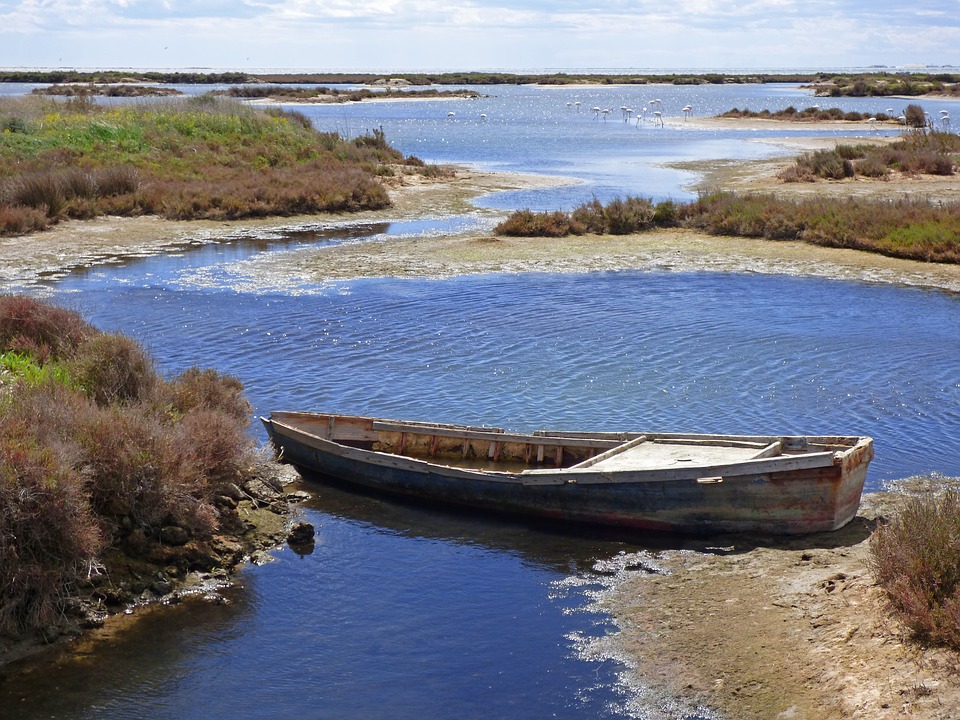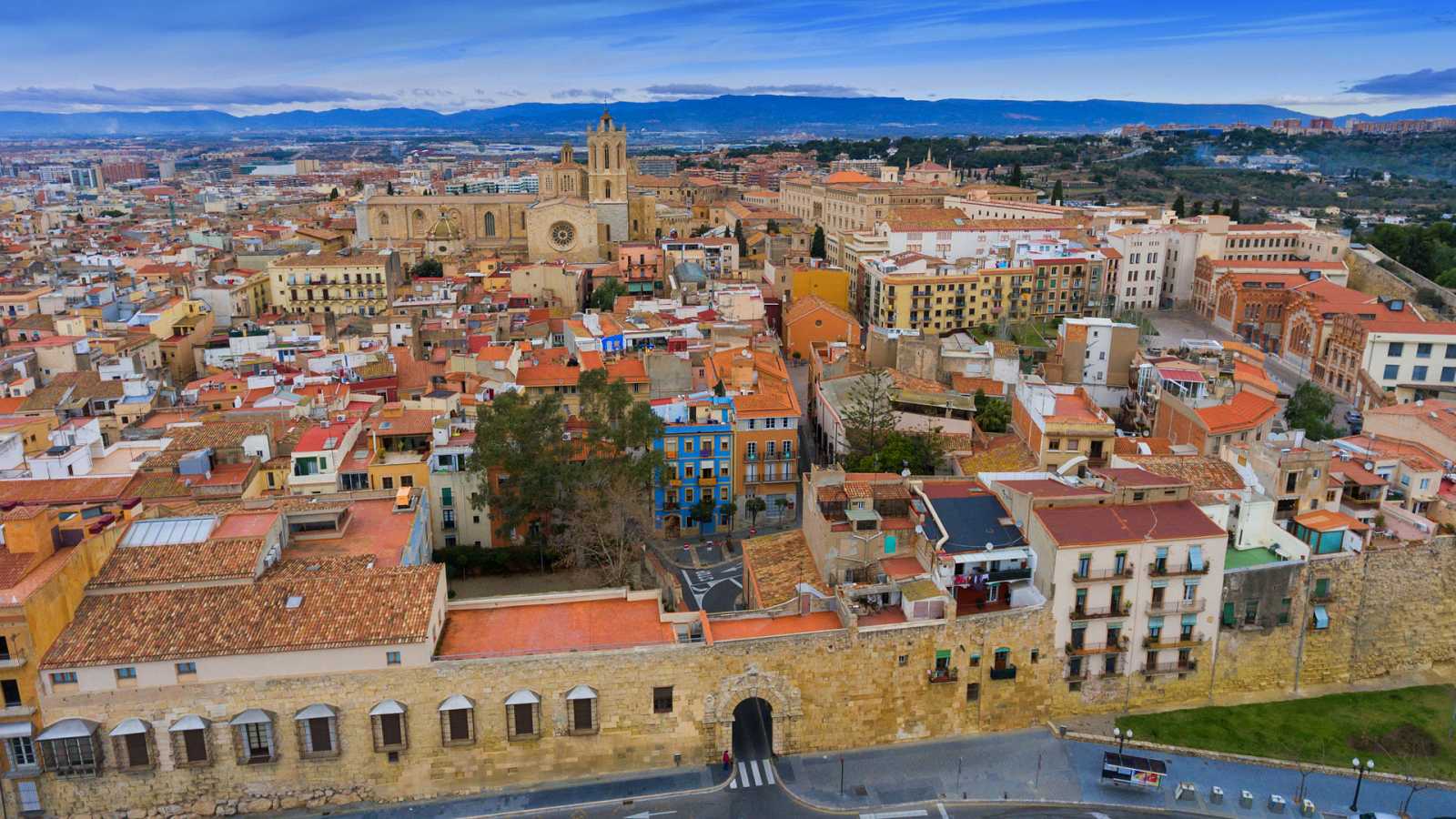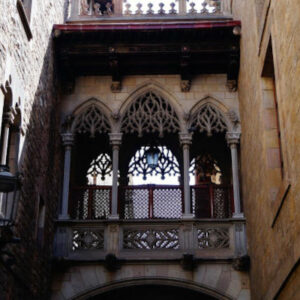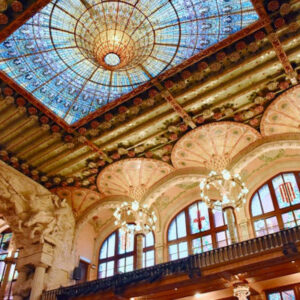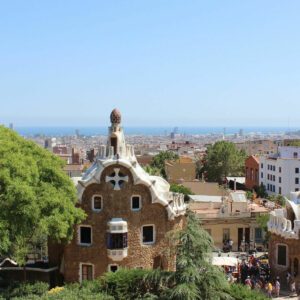EBRO DELTA AND TARRAGONA TOUR – 2 DAYS
343,00€
In this Tours you will only find Delicious Food and Fabulous Landscapes. of Ebro Delta
- Departure from Barcelona.
- Travel by car or train, depending on the number of travelers.
- Tour of the Poblet Monastery.
- Visit and wine tasting in Cornuella.
- Cruise through Sant Carles de la Ràpita.
- Walk through the Ebro Delta.
- View of the Balcony of the Mediterranean in Tarragona.
- Return to Barcelona.
EBRO DELTA AND TARRAGONA TOUR – 2 DAYS
343,00€
DESTINATION INFORMATION
GENERAL DESCRIPTION EBRO DELTA GASTRONOMY AND TARRAGONA TOUR ⇢
DAY 1: EBRO DELTA
Visit EBRO DELTA
We will spend our day exploring Delta del Ebro, a special place where we can enjoy the delicious local food and the fabulous landscapes; also and even better of all: we could swim between Mediterranean red tuna schools.
Visit to L’Ametlla de Mar
Our first activity at L’Ametlla de Mar, will be on board of a catamarán that will take us to get an unforgettable experience: a swim with red tuna fishes. The tour begins at 10:00h.
Back from our adventure on water, we go to Riumar Port to have a special lunch: a delicious dish of seasonal rice, certified with a C.O.D. (Controlled Origin Denomination)
Visit to Sant Carles de la Ràpita
In the afternoon, we have several activities to choose from:
- Visit the Sant Carles de la Ràpita port, to enjoy the delicious local food of Delta del Ebro, such as oysters and mussels. From this port we can do a walk and meet the “nacras”, a giant specie of mussel of about 60 cm.
- MónNatura, the interpretation center of Delta del Ebro, where we can learn about the traditional fisihing.
- Bird watching at Tancada Viewpoint, where we can see flamingos and egrets.
At the end of tis fabulous day, we will return to Tarragona.
DAY 2: TARRAGONA – MONTSERRAT MONASTERY
We start with a visit to Tarragona.
Visit to Tarragona
We will arrive to the city of Tarragona to take a walking tour of the most emblematic places of this beautiful city that uniquely mixes the past and the present. We will make a tour from the bottom up of the city, so that we can ascend through the old town until it ends at Plaça del Rei, with countless restaurants.
Our starting point for the visit to Tarragona will be the final part of the Rambla Nova avenue. At this point is the Mediterranean Balcony, a viewpoint with a fabulous sight of the Tarragona Amphitheater and the Miracle platform.
As we are very close, we will go down to the Amphitheater, Romanesque construction of the second century and that was built by digging the rock. We will enter the historic center of Tarragona. We will cross the Via Augusta, to reach the Roman Circus of Tarragona, built in the first century. From there the views are fascinating. We will now go to La Plaça de la Font, a long square that was previously the arena of the Circus.
Next, we will visit the Praetorium and we will see the model of the medieval city, as well as travel the 90 meters of vaults that supported the stands of the circus.
We will now visit Plaça del Rei, in the old town of Tarragona. The terraces in this square offer a unique gastronomic experience. We will stop for lunch.
We will visit the Cathedral of Tarragona, located in the ruins of a huge Roman temple. This construction started in the twelfth century was consecrated until two centuries later, and reveals an interesting transition of styles between Roman and Gothic.
Finally we will do the Archaeological Walk, a pedestrian walkway of one kilometer parallel to the old walls of the second century.
We will finish our tour in El Portal de San Antonio, the largest of the gates of the wall of Tarragona that is still preserved.
Visit to Montserrat Monastery
We will arrive at the Monstserrat Monastery, a place with more than a thousand years of construction, for a tour of the basilica and the other buildings that make up the monastery: an open-air museum. The Basilica stands out for its 12 meter high organ and more than 4,200 tubes. Now we will enter the Museum of Montserrat, where we will see art works by El Greco, Miró, Dalí, Tápies and Picasso.
Nexy, we will go up to the Sant Joan Funicular, to the upper stop, and we will have one of the best views of the monastery, and if the weather permits it, we can even have great views of all of Catalonia.
We will walk other rocky trails on foot to contemplate fabulous views of the Montserrat National Park, and the Monastery. Now it will be time to have a break for lunch.
After the visit, we will go back to Barcelona
DELTA DEL EBRO INFORMATION
Delta del Ebro and its History
The greatest growth in this area was constituted during the fourteenth and fifteenth centuries due to the great deforestation of the Ebro basin. This was due to the need to build ships for the next discovery of America. From this, the mouth has varied from position to configuration known today. Its main lobe, on the Island of Buda, was formed by the regression of the other two lobes between the years 1750 and 1850. Therefore, it is not believed that there may be the formation of any other island. Its rounded profile on the front of the delta is due to the action of the sea and the system closed to the deteriorated sand on the beaches of the Delta, this is transported thanks to the sea currents and settles at the tips of the Fangar and the Horn.
Moli de Rafelet
The Moli de Rafelet is located in a town within the Ebro Delta a few kilometers from the sea, in a small town called Deltebre in La Cava, surrounded by wildlife, countryside and a natural park where the island of Buddha is located. The Rice Mill Museum is inside an 1850 mansion just arranged inside, only the wooden beams of the stone ceiling have been reinforced. The mill was founded by Mr. Rafael Margalef Bertomeu, in 1935, with the characteristic of homegrown.
MonNatura
Opened in 2002, it is an equipment of the Catalunya La Pedrera Foundation, it offers stays and activities aimed at all types of audiences with a very clear mission to teach: the awareness of society towards sustainable development, nature conservation and the landscape through environmental education activities.
Located in a beautiful area of the Valls d’Àneu, in the Pallars Sobirà, MónNatura Pirineus, this center has unique facilities in the Pyrenees that allow the visitor to enjoy the high mountains and discover all its attractions, making the value important the culture of sustainability and offering identification and respect for the different elements found in the landscape.
Platja del Trabucador
Located in the southern part of the Ebro Delta. Very dear to Naturism lovers. It is a sandbar of about 6.5 km with a width of about 50 m with sea side and side nestled in the natural reserve of the Delta del Ebro Natural Park. It leads to the Salinas de la Trinitat and the peninsula of Punta de la Banya, has prohibited access areas for bird protection. This being an area with sea to the east and west you can enjoy exits and stunning sunsets. Located in Poblenou del Delta (Sant Carles de la Ràpita), It is a glory for lovers of bird and landscape photography. Ideal for ornithology or bird watchers (Audouin gull, common flamingo, avetorillo, calamón).
Bahia dels Alfacs
This was created naturally in the sixteenth century thanks to the alluvial contributions of the Ebro River. With the first sandbar known as l’Alfac (alfaque), which ended up connecting through the Trabucador bar with a New tongue of land known as Banya, this largest natural bay in Europe was formed.
It is immense, but shallow, it is one of the safest natural harbors on the Catalan coast, ideal for water sports. Because of its character as a great natural port, it was chosen by Carlos III to project the construction of a large port in the Mediterranean.
Visit Tarragona and its History
The origin of Terragona is in a small Iberian town called Kese. Tarragona, its name is due to the Tarraco that was a Colonia Iulia Vrbs Triumphalis, Tarraco de los Romans, was the capital of Hispania Citerior in the Republican era and of the province of Hispania Tarraconensis during the Empire. After the invasion of 711 the Arabs took over and ruled this province, when Carlo Magno came to power he established the so-called Hispanic Brand that was made up of the cities of Catalonia, Barcelona, Tarragona and Gerona. In the year 1116, once again Tarragona is reconquered by Ramón Berenguer III.
When Robert Bornet seizes Tarragona, since the archbishop gave him the city as an ecclesiastical principality, he was named prince of Tarragona and the Normans, commanded by Bordet, settled in the city.
Mediterranean Balcony
Also called the Mirador de Benidorm or Mirador del Castillo, located at the end of the Castelar square, in front of the church of Santa Ana is this Balcony
There is a peninsula in the form of a pentagon with a railing, its attractiveness is its peculiar shape, its gray tiles and a great lamppost of 5 lights, you will have incredible views that the Mediterranean Sea offers.
Roman Circus of Tarragona
It is considered one of the best preserved circuses in the West for its incredible state, it is said that a part of its structure remains hidden under old buildings of the nineteenth century.
In it the Ludi circus took refuge, the most applauded spectacles of the Roman world: the car races, usually pulled by two or four horses (beams or quadrigas). Built at the end of the 1st century AD, in the government of Emperor Domitian (last of the Flavia dynasty), the Circus of Tarraco is the last of the constructions on the lower terrace of the upper part of the city, leaving the imperial zone of Commercial and residential neighborhoods.
Tarragona Archaeological Museum
It is the oldest archaeological museum in Catalonia. Its distinguished collection shows the historical and monumental importance of the city.
The museum shows the historical and monumental importance of the city and the frequent Roman remains that are under the urban helmet, these have oriented the investigative efforts of the museum towards that historical stage.
San Antonio Portal
The San Antonio portal is the only entrance that is preserved from the old wall of Tarragona.
It is of Baroque style, its decoration comes from the year 1737: shield and crown are of Felipe V between lions and shield of Tarragona on the semicircular arch. On both sides, pilasters crowned by Roman trophies in which there is a legend regarding the construction of the portal.
Monserrat and its History
The sanctuary has its historical origin in the hermitage of Santa Maria that Count Wifredo el Velloso donated to the monastery of Ripoll in 888.
In 1025, Oliba, abbot of Ripoll and bishop of Vic, was the founder of a new monastery in the hermitage of Santa María de Montserrat. In a very short time, the small monastery had pilgrims and visitors, these contributed to make known among the villagers the stories of miracles and wonders that the Virgin worked.
In 1409, the monastery became an independent monastery. Between 1493 and 1835, a time of great growth reforms, Montserrat was part of the Congregation of Valladolid.
During the 17th and 18th centuries, the monastery becomes a cultural center of the first order. Great composers leave the monastery’s music school.
Later, the Napoleonic war and the confiscation of 1835 turned it into destruction and abandonment. But in 1844 the restoration of monastic life began and in 1881, at the Feast of the Coronation of the Image of the Virgin, she was proclaimed as Patroness of Catalonia by Pope Leo XIII
In the Spanish Civil War, abandonment was experienced again in the monastery. But, the Government of Catalonia preserved Montserrat from looting and destruction.
DATES OF THE EBRO DELTA GASTRONOMY AND TARRAGONA TOUR
All year except Christmas, New Year and St. Stephen.
WHAT INCLUDES THE EBRO DELTA GASTRONOMY AND TARRAGONA TOUR
Incldues:
• Private vehicle transfer or Minibus
• Red Tuna Cruise
• Oyster and mussel tasting
• Visit the Rice Museum
• Guide throughout the tour
CONDITIONS AND CANCELLATION POLICY ☜
- Maximum capacity: 15 people.
- Meeting point: Pick up at the Hotel of Hospedaje.
- It is essentialto have received the reservation confirmation.
CANCELLATION POLICY
1-day tours are cancelable up to 24 hours before.
SIMILAR TOURS AND ACTIVITIES

Discover the multicultural Spain with us
BARCELONA LANDS is a receptive of Tours, Activities and services in Barcelona, Madrid, and other cities in Spain. We have been offering tourist services of all kinds for more than 10 years.
We are experts in the destination, and we know the best corners so that you can enjoy all the services you can hire. We can offer you any service you are looking for, and customize the products we offer. All our Tours are private or in small groups and with professional guides. You can choose a wide range of possibilities with Tours and activities of 1 day and several days.

